
Tata Harrier Petrol MT And AT Confirmed, But There Is A Wait
- Mar 6, 2019
- Views : 16415

Update: The Tata Harrier has been launched at a very competitive price of Rs 12.69 lakh, ex-showroom Mumbai! All the details here.
The new Harrier is looking to take the Tata nameplate upmarket. Prices are expected to range between Rs 13 lakh - Rs 17 lakh (ex-showroom), and so this Tata will need to wow shoppers to coax them away from the Hyundai Creta and Jeep Compass. Using Land Rover’s D8 monocoque platform from the Discovery Sport and and a diesel engine from Fiat, which is in fact the same unit used in the Jeep Compass, the Harrier packs promising mechanicals. Slathered on top is Tata’s sharp Impact 2.0 design language and there’s the promise of a genuinely luxurious in-cabin experience which marries modern tech with an elegant design. Can the Harrier really hit the spot as a premium SUV?
Face It
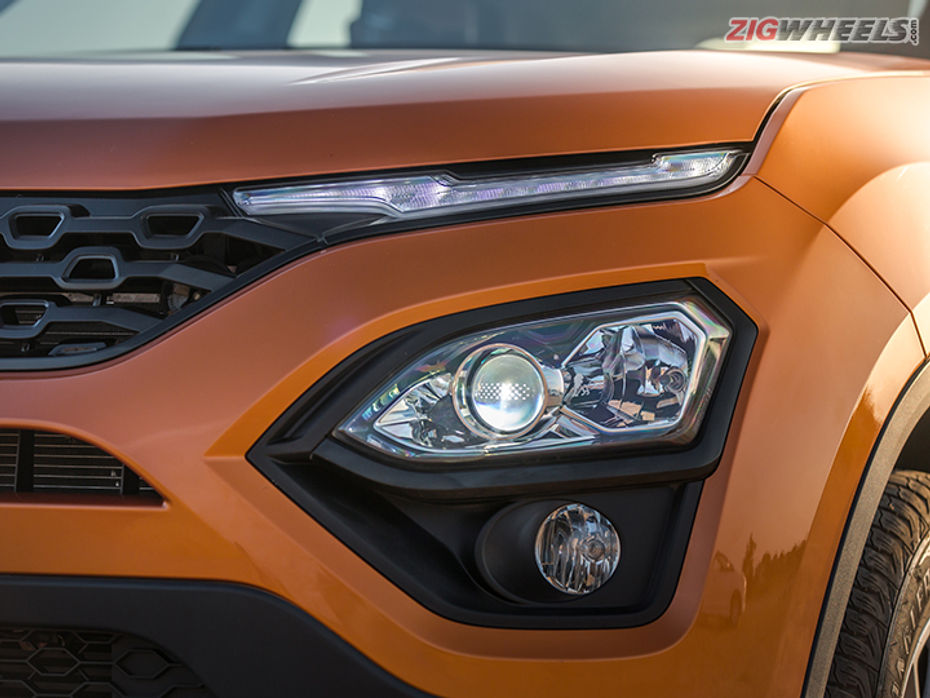
In bright Copper, with the slim LED DRLs cum turn indicators slicing in right under the bonnet, the Harrier draws its connection to the Tata H5X concept with ease. But the few tweaks to the design has caused a chunk of the fandom to switch sides, or at least take to the fence. The quirky geometric design of the headlamp housing and the slightly heavier chin will have to bear that burden. Impact design language trademarks, like the various hexagonal elements, are bolder than before, especially on the grille. While all of this gives the Harrier a sharp and edgy look, the wide band of black cladding and the contrasting silver faux skid plate remind you that the Harrier is a rugged one.

The strength of the Harrier is also in its stance. It stretches 2741mm between the wheels, a footprint that dwarfs bigger and more expensive SUVs. Even in terms of overall length, the Harrier is a size larger than its immediate rivals and more expensive ones too. You can expect this Harrier to stand out from the crowd quite easily and give big ladder-on-frame SUVs something to chew on too. The only bit that lets the Harrier down are the 17-inch alloy wheels, these look a bit small. Tata could easily offer 18-inch wheels without compromising ride quality or durability.
|
Tata Harrier |
Jeep Compass |
Honda CR-V |
|
|
Length |
4598mm |
4395mm |
4584mm |
|
Wheelbase |
2741mm |
2636mm |
2660mm |

Tata’s Harrier also takes on a more sporty stance than its rivals and its platform donor, the Discovery Sport. The rising window line and the sloping roofline squish the glass area a bit and give it a sportier look. Edginess mixed with sophistication makes a comeback when you look at the rear. What got our attention right away was the flush fitting design of the rear bumper. The funky quotient is upped by the connected tail lamps that can be best described as a two-headed spear? Smooth LED elements in the sharply creased lamps add to the sense of premiumness. Although a bit quirky at first, the centre-aligned Harrier badging on the tailgate grows on you rapidly.
Stepping in, and up
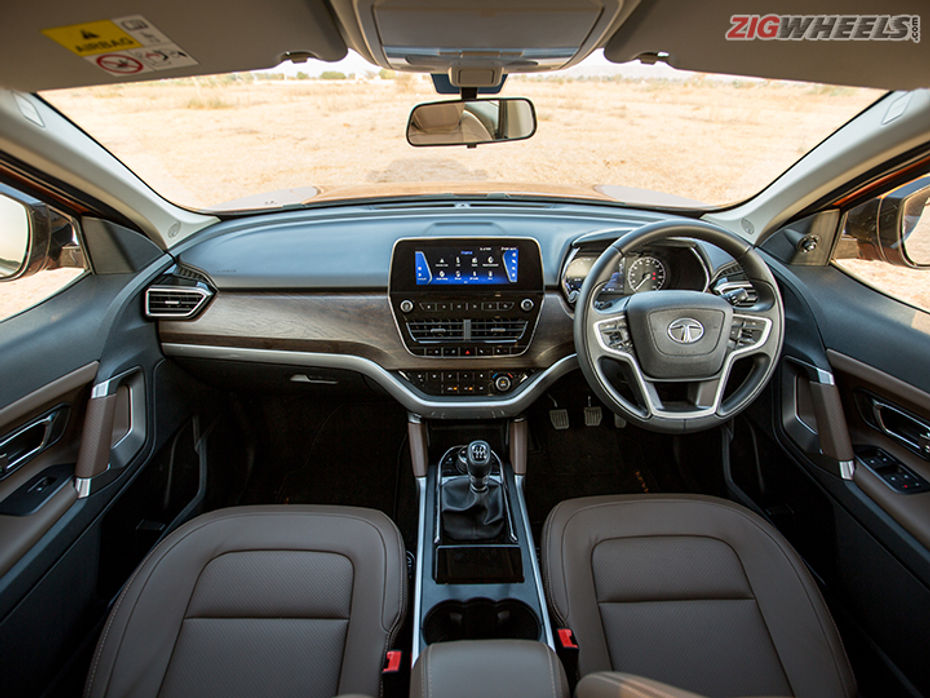
For most of us, it will take some time for it to sink in that this cabin is from a Tata. It starts from when you shut the doors behind you with a reassuring thud. It’s a credit to Tata’s design team that they have created a look that doesn’t feel derived or contrived. Clean and classy describes it best. The simple silver accents that cradle the dash, the beautifully finished faux wood strip that runs above and the discreet use of chrome around the wide 8.8-inch infotainment screen (7-inch on the XM and XT variants) and centre air-con vents is tasteful indeed. The soft touch plastic on the dash top, offered only on the top two variants, adds to the sense of premiumness. I absolutely loved the door handles that actually felt cold to the touch, or hot, giving the sensation of quality metal. But, there are a few touchpoints that could have been richer to hold or behold, like the plasticky gear lever and the dull looking steering wheel.
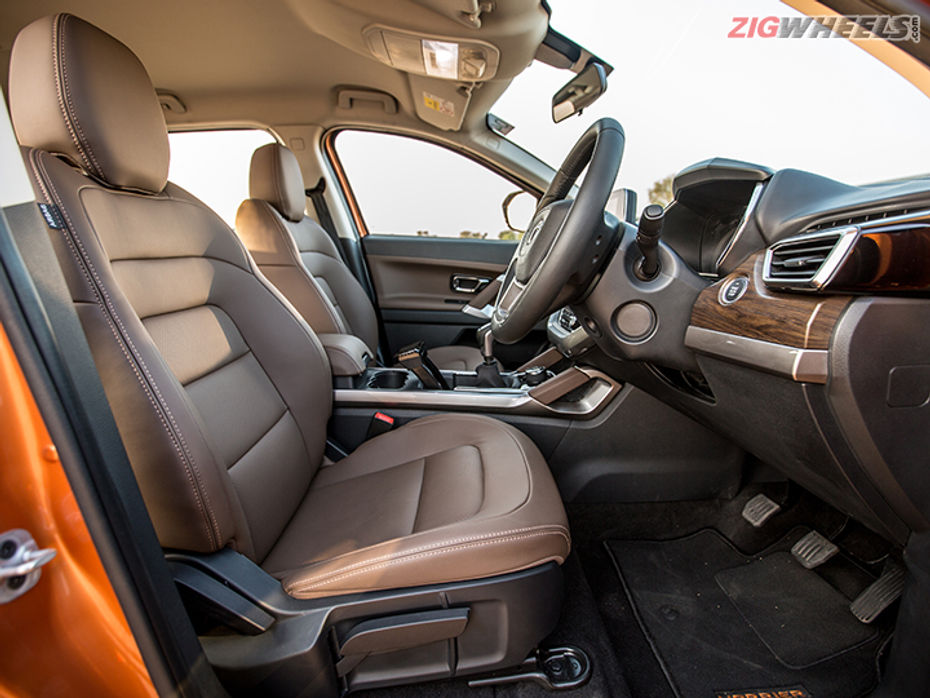
However, the seats, which are wrapped in tan colour leather, are kind to the eyes and your frame. Space isn’t in short supply either. There’s ample headroom and the wide cabin makes it feel airier still. But compared to the Discovery Sport, the Harrier makes you feel like you are sitting in a sportier “in-the-car” position rather than “on-top-of-it” SUV feel. However, there are a few ergonomic issues for the driver, like finding a good driving position that takes a lot of fiddling and the raked A-pillar and large ORVM that create a big blindspot which require some care when you navigate around roundabouts or intersections.
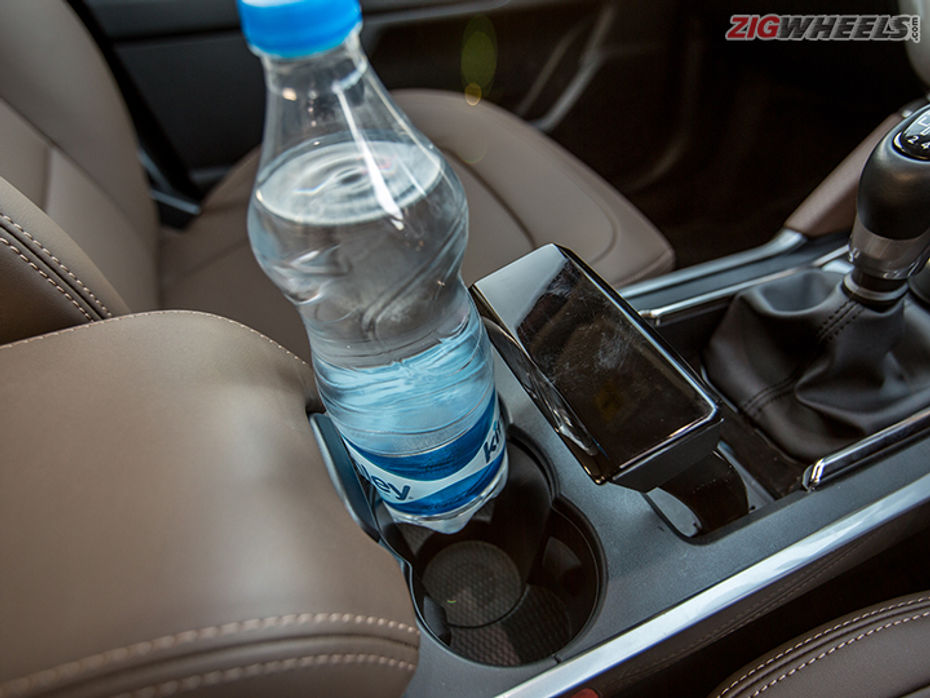
Less critical complaints are the USB and audio jack ports that have been positioned in a tiny cave under the centre stack and the chunky parking brake lever that arcs over the cup holders behind it.
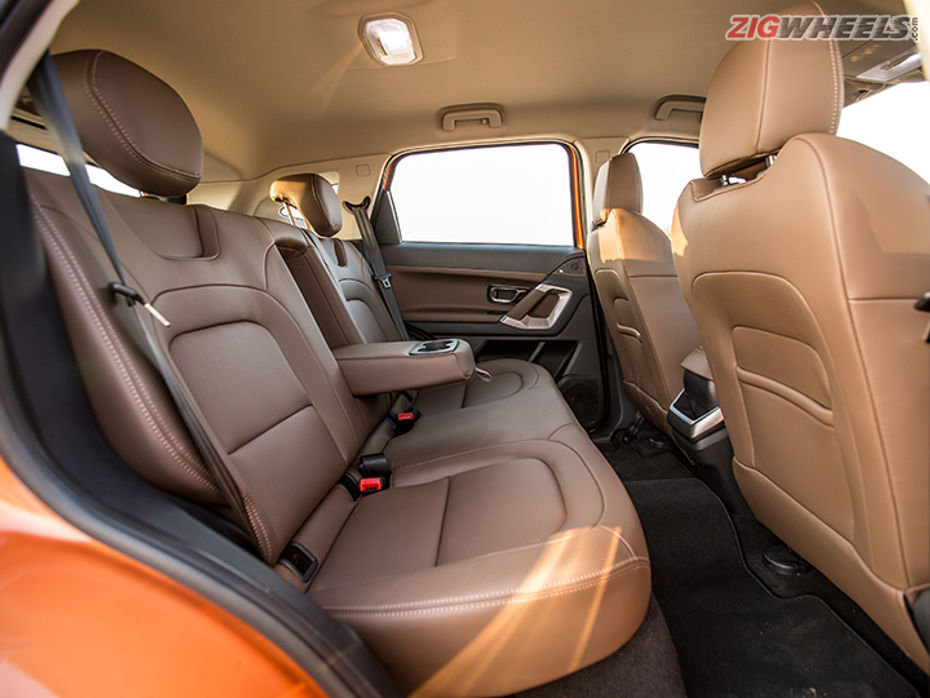
Nada. That’s what backseat passengers will have to complain about! After all, kneeroom and headroom is in plenty. The seats are supportive and shaped to ensure that even the middle passenger is comfortable. There are aircon vents mounted on the B-pillar and the nifty trays to stow your mobile phone in the doors are very handy. The only miss is that the 60:40 split and folding seat isn’t recline adjustable.
Good-ies?
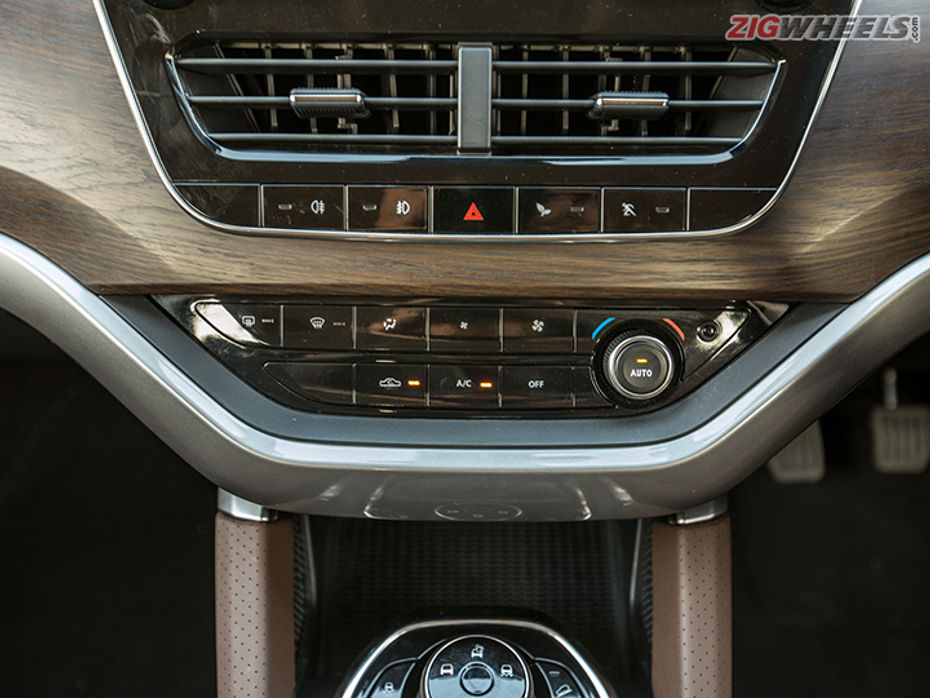
Let’s get what isn’t on offer out of the way first. Sunroof. Ventilated seats. Ambient lighting. Boo hoo.
The Harrier packs a lot without seeming like a brochure Ninja. It has a fully automatic climate control system that has been lifted from the Discovery Sport. The logo projection units are also a luxury car connection.
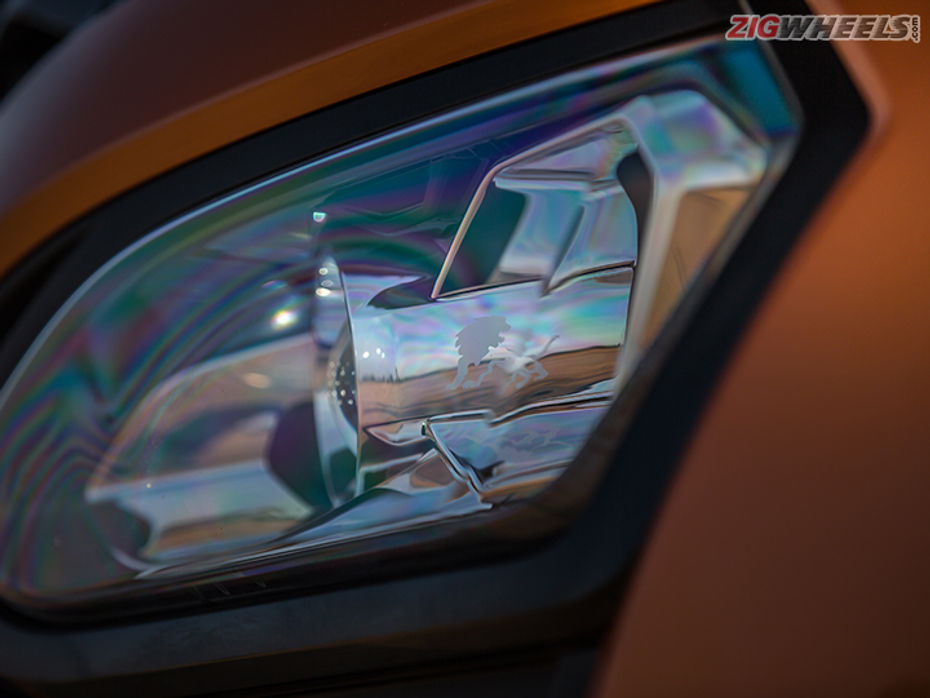
On the topic of lights, the headlamps get HID projectors for the low beam while the high beam is a halogen unit. The fog lamp also offers cornering functionality in the top-spec XZ variant. There are rain-sensing wipers and automatic headlamps too. It is worth noting that the driver gets cruise control and an 8-way manually adjustable seat too.
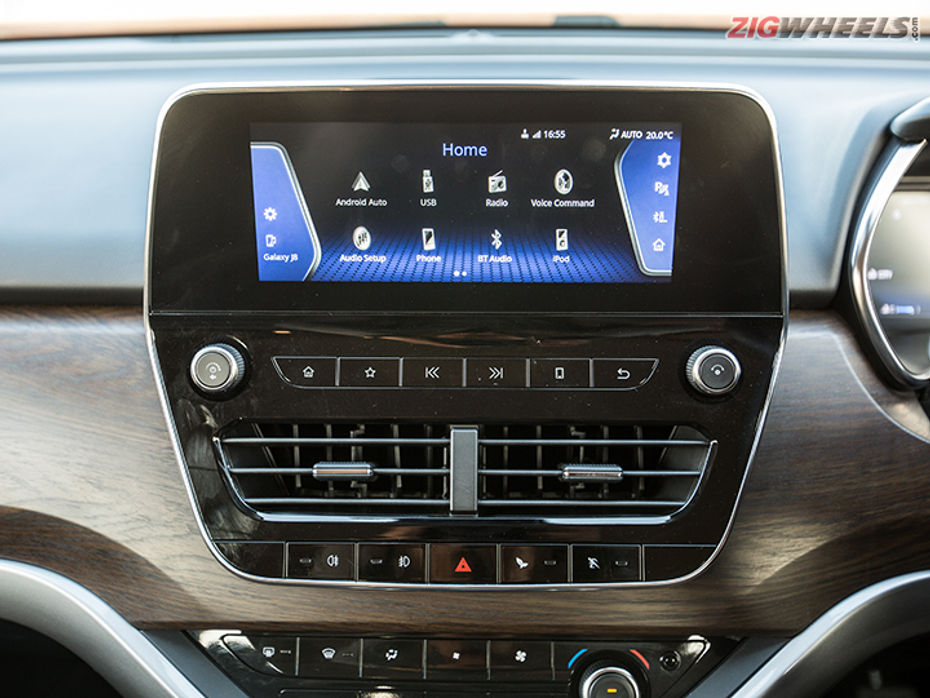
For the infotainment system, there is an 8.8-inch touchscreen laid out horizontally. The screen is great to use and doesn’t intrude into your view out of the cabin. It comes equipped with Android Auto while Apple CarPlay will be available in the near future. The screen also shares information such as navigation instructions or music with the driver’s 7-inch colour TFT display.
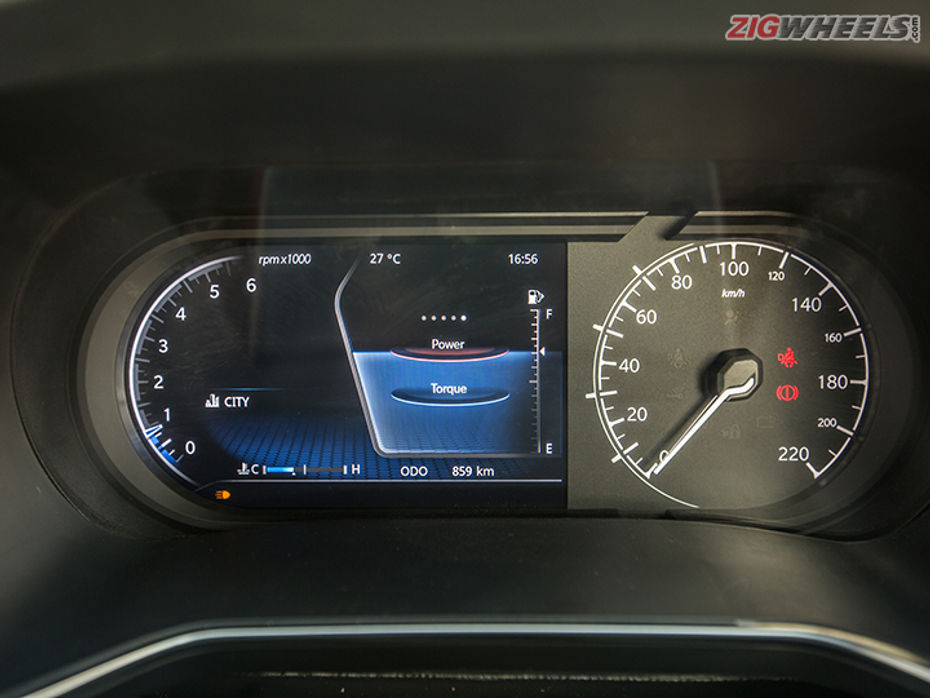
This display also shows you realtime power and torque readouts aside from other trip and fuel consumption details. One of the highlights of the top-end XZ variant has to be the JBL audio setup. Using 4 tweeters, 4 speakers, 1 subwoofer and an external amp, it creates a front-row live performance experience. The sound staging is plain mesmerising. I felt like Freddie was yodeling on the other side of the recording studio window. Epic. But there are some functional misses, the reversing camera quality could have been better, and there is no auto-dimming IRVM.
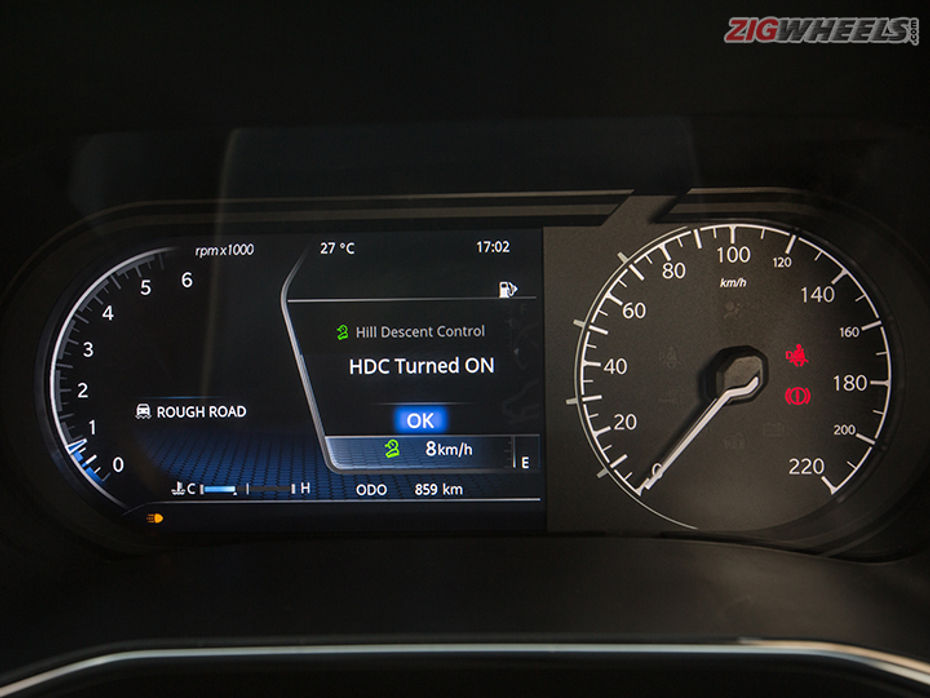
But, there is substance. Plenty of it. While the lower three variants get just dual-airbags and ABS, the top-end XZ variant gets six airbags, ESP, hill hold assist, hill descent control, roll over mitigation, brake disc wiping, traction control and ISOFIX anchor points. Aside from this, the Harrier also gets three drive modes - City, Sport and Eco - and three Terrain Response modes - Normal, Wet and Rough. More on these in the next section.
Harry the horizon
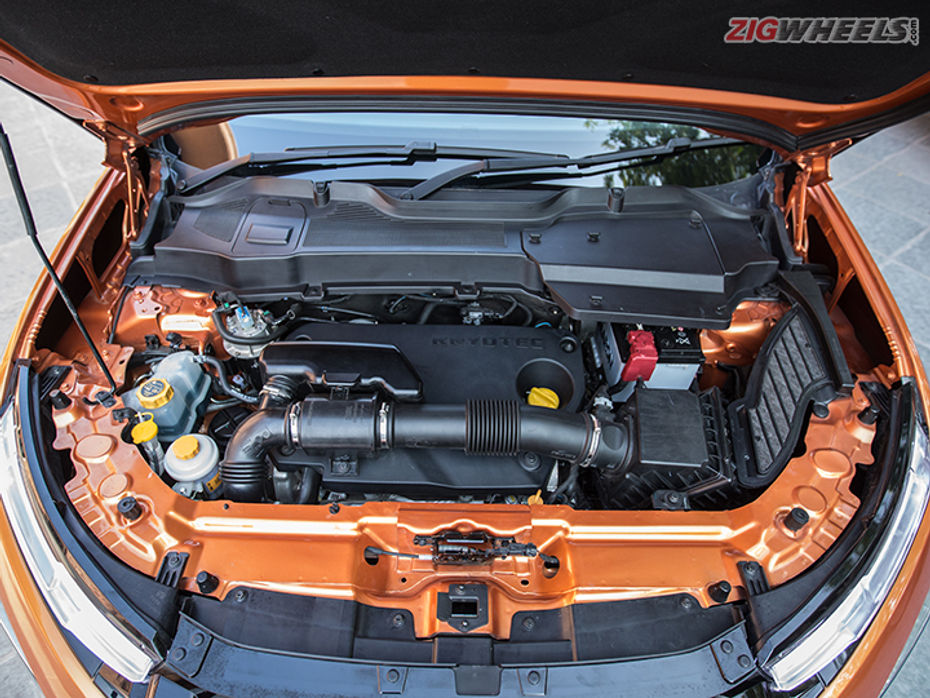
Kryotec or Multijet, call it what you will, but the 2.0-litre diesel engine is a clear highpoint here. Being down on power to 140PS compared to the Jeep Compass’ 173PS hasn’t hurt the Harrier one bit. This re-tune has afforded the Harrier amazing drivability, making it very easy to drive in the city. It is possible to just walk around city streets in third gear without having to reach for the gear lever again and again. From 1000rpm, the torque helps you get a move on.
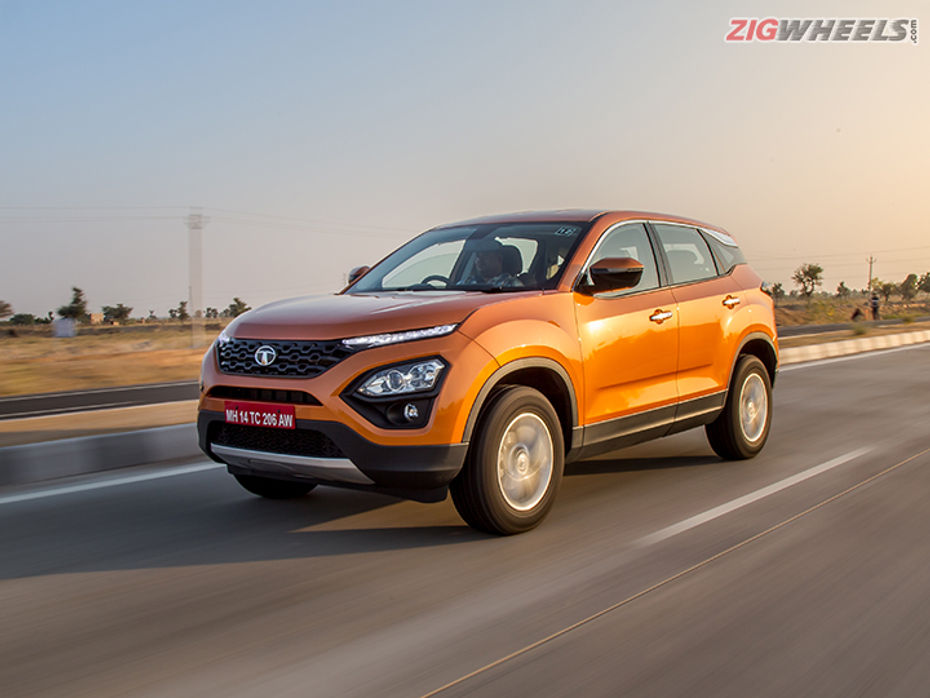
The power does get stronger above 2000rpm before running out of steam at 4000rpm, just 1000rpm away from the limiter. But, even on the highway, rarely would you have to rev it that hard. Shifting up the 6-speed gearbox earlier gets the job done well enough. While the clutch is light, the gearshifts could have been smoother. Yes, there is something missing though — an automatic transmission. A Hyundai-sourced gearbox is under development and will be added to the lineup in the future.
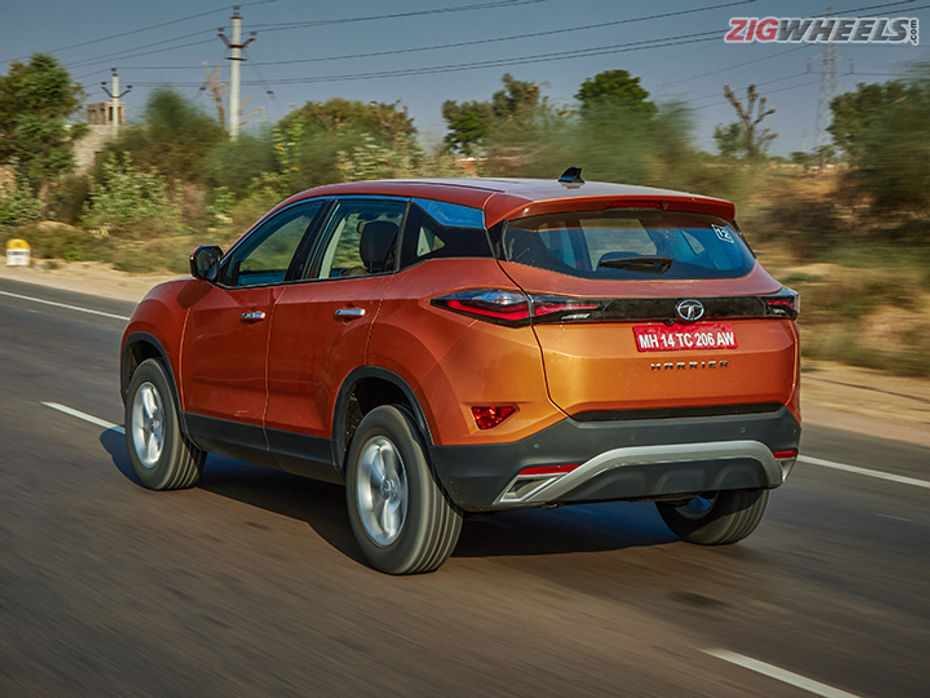
Be it the long haul or running around the city, the Harrier has the mettle to deliver. The City drive mode makes things more enjoyable at slow speeds as it softens the torque from the engine and the throttle response to make the going calm and smooth. The Sport mode adds a spring to the step, which is perfect for highway stints. Irrespective of which mode you use, the Harrier can cruise at 100kph in 6th gear at just 1800rpm. Eco mode dulls the responsiveness significantly, but should pay dividends in terms of fuel efficiency. While Tata hasn’t claimed any fuel efficiency figures yet, we saw about 15kmpl being indicated on the car's computer.
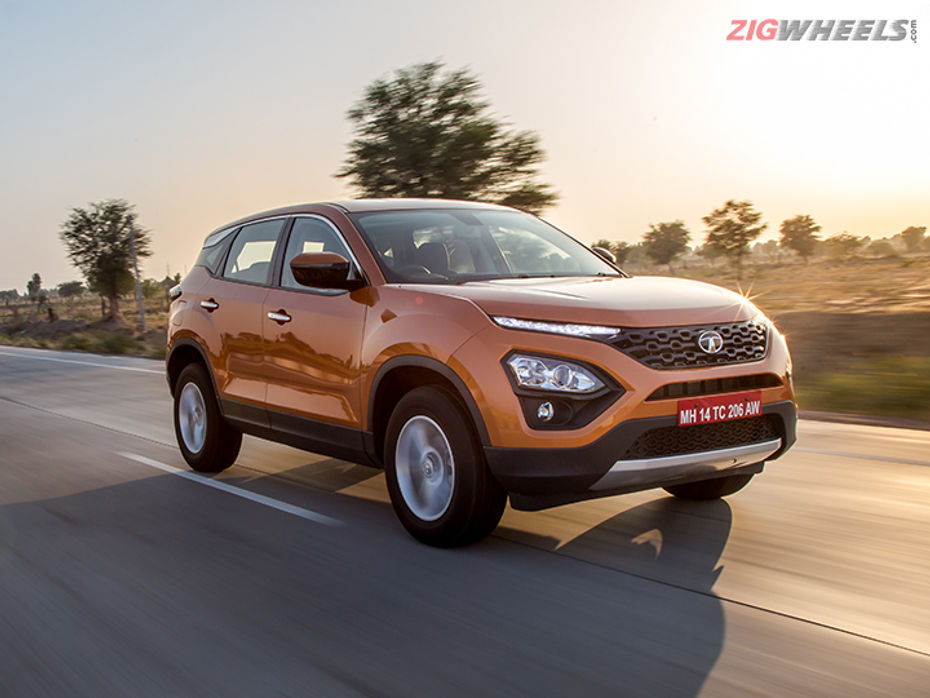
The only real complaint we have isn’t actually directed at the engine, but the sound insulation. Tyre noise, road noise and the engine drone should have been better damped. This would have multiplied the sense of luxury and fatigue-free travel. Part of the credit for the said tirelessness is also thanks to the chassis and suspension.
Crossed Over
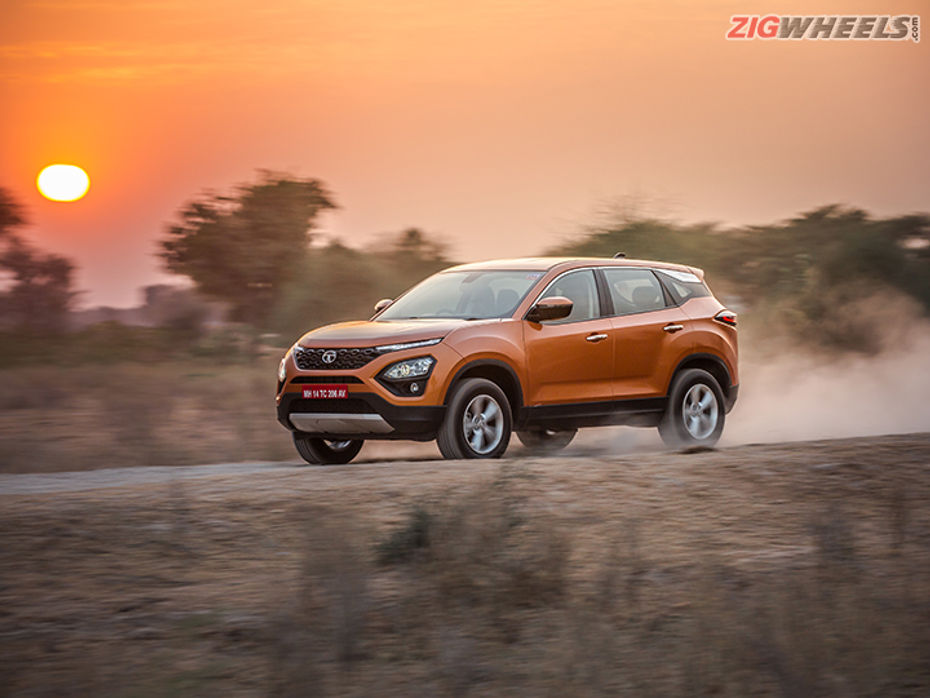
The promise of crossovers has been delivered by the Harrier. First, its Land Rover genes ensure that it smothers poor surfaces, at city or highway speeds. It relishes in taking the meanest of road surfaces and taking the sting out of them. Faster, better. At low speeds, only the rowdiest of speed breakers will jostle you. Only by a bit. Dish out some smooth highways and this Tata will head well north of the 100kmph mark and not get floaty or unruly. It is appreciable that the Harrier has avoided the lurchiness that Land Rovers exhibit on the road. However, the occupants in the rear will feel a bit of bounciness.
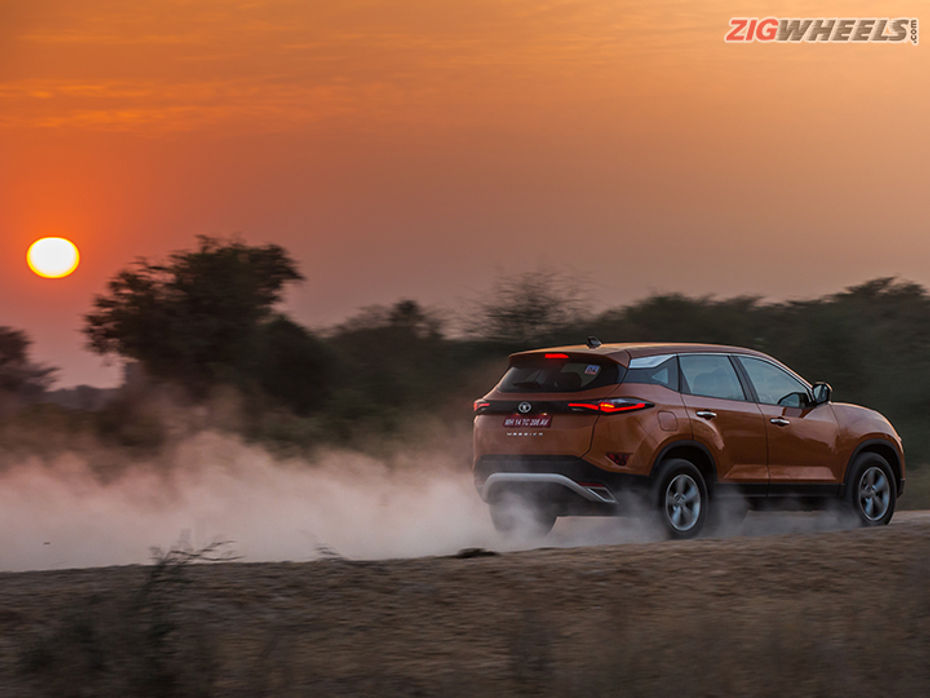
Second, it is fun to drive. The hydraulic steering, albeit a touch heavy at low speeds, is quick to get this 1675kg brute to change directions with surprising eagerness. As it switches lanes the body roll is well contained and doesn’t force you to back off. Although the brakes are adequate, a bit more bite and feel would have been welcome when stopping from high speeds. Keep in mind there is no all-wheel drive on offer on the Harrier and isn’t likely to be anytime soon. While this will disappoint some buyers, Tata is offering an ESP-based Terrain Response system that alter throttle and engine responsiveness and ESP intervention to help the Harrier claw further down the path less taken than you would have expected. We can’t wait to test the claim.
Verdict
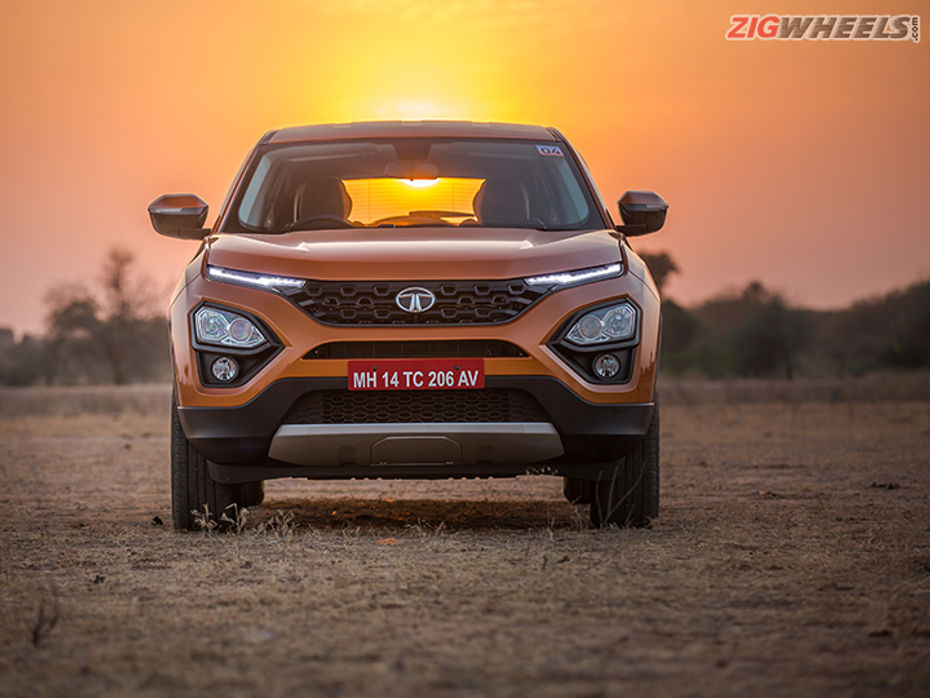
We will start this off with a caveat. The Harrier had a few small issues, like buggy infotainment software and a few fit-and-finish issues. However, the issues on the pre-production prototypes are expected to be ironed out by the time the Harrier heads into Tata showrooms in January 2019. We aren’t suggesting that the Harrier is flawless otherwise, but its shortcomings are such that you could learn to overlook or find a workaround. However, we hope that Tata bolsters the Harrier’s potential by improving the sound insulation. (Note: - At the launch Tata said, the final production versions have updated sound insulation. Yet to be tested by us.)

Despite this, the depth and width of the Harrier’s talent pool will tempt many to look very closely at this SUV, especially when you consider that it is priced brilliantly - from Rs 12.69 lakh-Rs 16.25 lakh (ex-showroom)! So, the Harrier stands out, can tackle the crowded and desolate parts of India with ease, it pampers and shields, and comes with a price tag that makes it the all-rounder you had always hoped for.

Tata Harrier Petrol MT And AT Confirmed, But There Is A Wait

2022 Mahindra Scorpio N First Drive: Perfect Middle Ground?

Kia Seltos 2023 Facelift: Good Made Better!

2023 Tata Nexon: Punching Above!

Tata Harrier Meets Its Heroes & Sierra, Sumo, Safari & Hexa! Feature
 Mahindra XUV700
Mahindra XUV700
 Mahindra Scorpio N
Mahindra Scorpio N
 Jeep Compass
Jeep Compass
 Kia Seltos
Kia Seltos
 MG Hector
MG Hector
India's largest automotive community
 Maruti Suzuki Introduces This Safety Feature For The FIRST Time With The e Vitara, Along With 7 Other Comfort And Convenience Equipment
Maruti Suzuki Introduces This Safety Feature For The FIRST Time With The e Vitara, Along With 7 Other Comfort And Convenience Equipment
 Mahindra XEV 9e: Upsides And Downsides Of The Premium Electric SUV Coupe
Mahindra XEV 9e: Upsides And Downsides Of The Premium Electric SUV Coupe
 8 Features The Kia Syros Gets Over The Tata Nexon
8 Features The Kia Syros Gets Over The Tata Nexon
 Skoda Kylaq - Power-Packed Performance
Skoda Kylaq - Power-Packed Performance
 Tata Punch
Rs. 5.99 Lakh
Tata Punch
Rs. 5.99 Lakh
 Tata Nexon
Rs. 7.99 Lakh
Tata Nexon
Rs. 7.99 Lakh
 Tata Curvv
Rs. 9.99 Lakh
Tata Curvv
Rs. 9.99 Lakh
 Tata Tiago
Rs. 4.99 Lakh
Tata Tiago
Rs. 4.99 Lakh
 Tata Harrier
Rs. 14.99 Lakh
Tata Harrier
Rs. 14.99 Lakh
 Tata Punch
Rs. 5.99 Lakh
Tata Punch
Rs. 5.99 Lakh
 Hyundai Creta
Rs. 11.10 Lakh
Hyundai Creta
Rs. 11.10 Lakh
 Mahindra Thar ROXX
Rs. 12.99 Lakh
Mahindra Thar ROXX
Rs. 12.99 Lakh
 Tata Nexon
Rs. 7.99 Lakh
Tata Nexon
Rs. 7.99 Lakh
 Mahindra XUV700
Rs. 13.99 Lakh
Mahindra XUV700
Rs. 13.99 Lakh